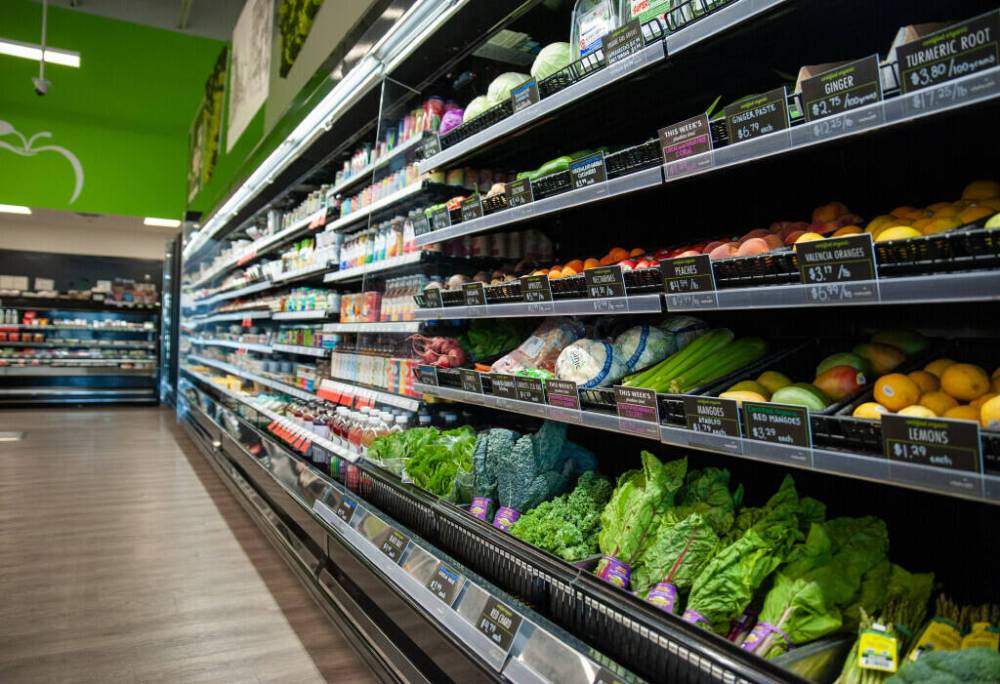Grocery prices will sting worse yet
Advertisement
Read this article for free:
or
Already have an account? Log in here »
To continue reading, please subscribe:
Monthly Digital Subscription
$0 for the first 4 weeks*
- Enjoy unlimited reading on winnipegfreepress.com
- Read the E-Edition, our digital replica newspaper
- Access News Break, our award-winning app
- Play interactive puzzles
*No charge for 4 weeks then price increases to the regular rate of $19.00 plus GST every four weeks. Offer available to new and qualified returning subscribers only. Cancel any time.
Monthly Digital Subscription
$4.75/week*
- Enjoy unlimited reading on winnipegfreepress.com
- Read the E-Edition, our digital replica newspaper
- Access News Break, our award-winning app
- Play interactive puzzles
*Billed as $19 plus GST every four weeks. Cancel any time.
To continue reading, please subscribe:
Add Free Press access to your Brandon Sun subscription for only an additional
$1 for the first 4 weeks*
*Your next subscription payment will increase by $1.00 and you will be charged $16.99 plus GST for four weeks. After four weeks, your payment will increase to $23.99 plus GST every four weeks.
Read unlimited articles for free today:
or
Already have an account? Log in here »
Hey there, time traveller!
This article was published 10/08/2023 (836 days ago), so information in it may no longer be current.
It was a heck of a one-two punch for a single Associated Press news story yesterday.
“July’s global average temperature of 16.95 degrees Celsius (62.51 degrees Fahrenheit) was a third of a degree Celsius (six-tenths of a degree Fahrenheit) higher than the previous record set in 2019, Copernicus Climate Change Service announced Tuesday. Normally global temperature records are broken by hundredths or a tenth of a degree, so this margin is unusual,” the first paragraph of the story read. (That temperature may seem almost chilly as we bask in daytime temperatures in Manitoba in the mid-20s C, but remember, that’s the average temperature for the globe, including parts of the world that are experiencing winter right now.)
The second paragraph? “The United States is now at a record 15 different weather disasters that caused at least US$1 billion in damage this year, the National Oceanic and Atmospheric Administration announced Tuesday. It’s the most mega-disasters through the first seven months of the year since the agency tracked such things starting in 1980, with the agency adjusting figures for inflation.”

File
Inflation in food prices may grow with climate change and shortages of supply.
But the temperature increases seem like such small increments, and the resulting weather disasters are far away.
It’s so much more important to talk about things nearer to home, like the trouble Canadians are having with steady increases in food prices — and food prices are increasing dramatically. Since April, the price of fruits, vegetables and meats have risen by 8.5 per cent. Some products, like butter and edible oils, have risen by 20 per cent in the past year.
It’s supply and demand, with a lovely little serving of corporate profiteering on top: Canada’s grocery giants are, shall we say, doing quite well in the profit department.
Difficulties related to scarcity of workers in crop harvesting, food processing and transportation — along with uncertainties surrounding the ongoing war in Ukraine — are hurting supply and helping to drive prices up.
But hold on to that thought — the one that the effects of supply and demand, even involving countries half a world away, could hit you in your wallet.
Then let’s go back to the hottest month on record, last month.
Think food is expensive now?
Food production could become more difficult — and food much more expensive — as weather patterns switch to more unstable patterns: late and unexpected frosts as a result of a weakened jet stream, more frequent intervals of intense flooding and drought, faster drying soils due to higher temperatures.
A July 4 study in the journal Nature Communications points out that just one of those climate change effects, the change in the jet stream, could produce “simultaneous crop failures across major crop-producing regions…”
“Synchronized crop failures due to simultaneous weather extremes across multiple breadbasket regions pose a risk to global food security and food system supply chains.”
There are other scientific studies showing decreases in food production are already occurring with the current climate changes (the bulk of those changes are not in Canada, but, once again, global supply and demand sets prices). And there’s a fair amount of scientific consensus that, absent significant adaptation, global agricultural production could show significant drops in yields — 10 to a staggering 50 per cent — by the 2030s.
Let’s not even get into the conundrum that ever-more intensive farming creates even more in the way of greenhouse gas volumes — in 2015, agriculture accounted for 34 per cent of the world’s greenhouse gas emissions — and that, as the global population grows, we need to produce even more food.
Talking about today’s food prices to distract from demonstrable changes in our climate is a kind of political bait and switch.
Ignore the forest: look at those trees!







